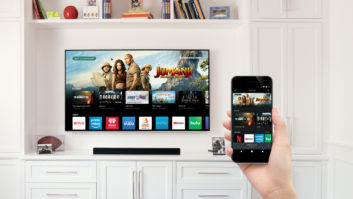The Knowledge and the Tools You Need to Fine-Tune a System

Anthony Grimani ([email protected]) is president of Performance Media Industries, with offices in Novato and San Anselmo, California.
The process of debugging, configuring, and tuning the audio and video is all-tooften misunderstood, under-appreciated, or simply ignored in our industry. The trouble is, when you skip these steps, systems can grossly under-perform to the point of embarrassment.
The simple fact is that you have to take the time to calibrate. You have to understand how to do it. You have to have the tools. Either that, or you have to go find someone who does. Otherwise, in a certain sense, you are stealing from your customer. And that’s too bad, because we’re talking about a very high value-added service that produces tangible, visible, and audible results.
Step One: Debugging the System.
Initially you must test and document the performance of your system’s audio and video equipment, and its connections and signal flow, using tools like multi-meters, oscilloscopes, and spectrum analyzers. It is impossible to do this without the proper test gear and knowledge. Simply running sound or picture into the system and verifying that something comes out the other end is inadequate. If you can read mV or check the electrical frequency response of a cable by touching your fingers to it, then you don’t need test gear (also, send me your resume.) For everyone else, test gear is a must.
Step Two: Configuration
Configuration tells every piece of equipment what it is and what to input/ output. Modern AV controllers and receivers can have approximately 100 individual settings per device hidden away in countless menus and submenus. We’re talking about settings that directly affect audio performance, video performance, operation/control, and networking. Never assume that the default settings will work. They might, but there could be one tiny thing in an obscure piece of equipment that completely destroys the audio-video performance of the entire system.
Step Three: Tuning
This is where many people think calibration begins. Here, we’re talking about things like setting distances, SPL, and EQ for the speakers, and picture controls and color temperature for the video display. Once again, you cannot do this without test gear.
To give you some idea of the substantial amount of work involved, you should budget three days of audio and one to two days of video for the whole process. Don’t pull the classic, “We’ll-figure-out-how-to-charge-for-this-atthe- end” line. This process should be taken much more seriously than that.
As an aside, please install products that can be calibrated. For instance, sell video displays that enable color temperature and primary color adjustments and audio products that allow channel levels and speaker distances to be adjusted in half dB and half-foot (or less) resolution.

Don’t Depend on Free or Automated Services
Manufacturer-sponsored (free) calibration services only look at one specific part of the system–their part. True calibration looks at the whole system from input to ear/eye.
Don’t make it automated, either. High-tech analyzers and computer algorithms can’t solve every problem; even the most sophisticated systems can’t get it exactly right. They cannot, for example, analyze the dramatic effect that tiny changes in delay make to the positioning of a front-to-surround phantom image. This requires a human head with ears tweaking from the chair.
Consider this as a parting thought: A really good calibrator can often smooth over design and/ or installation flaws that would otherwise require thousands of dollars to fix. What kind of value do you put on that?
Chase Walton contributed to this column.
>To Hire or Sub Out the Work?
A bona fide calibration specialist can make upwards of $150,000 a year, and most ES Cs can’t afford that unless they are installing at least 50 systems a year. Neither would you use the test gear often enough to remember how it works or justify the cost. If you don’t have a huge business, then hire a professionally trained, third-party calibrator. As an added bonus, you get fresh eyes to pick up on mistakes and goofs. Factor the cost (up to $4,000-6,000) into the budget, mark it up, and pass it along


